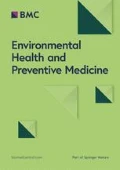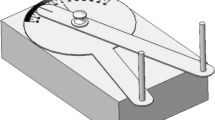Abstract
Objective
The aim of this study was to explore the relations between toe pinch force and other muscle strength parameters in male patients with type 2 diabetes mellitus.
Methods
A total of 40 men with type 2 diabetes (age: 53.4 ± 13.1 years, duration of diabetes: 8.5 ± 8.1 years) who needed exercise training were enrolled in this cross-sectional study. We evaluated the clinical parameters and 4 muscle strength parameters, which were toe pinch force, handgrip strength, isometric knee extension force, and isometric ankle dorsiflexion force.
Results
The HbA1c, toe pinch force, handgrip strength, isometric knee extension force, and isometric ankle dorsiflexion force were 10.1 ± 2.4 %, 3.2 ± 1.2 kg, 37.3 ± 7.0 kg, 39.6 ± 11.4 kgf, and 17.0 ± 6.3 kgf, respectively. Toe pinch force was significantly correlated with handgrip strength (r = 0.365, p = 0.0206), isometric knee extension force (r = 0.668, p < 0.0001), and isometric ankle dorsiflexion force (r = 0.514, p = 0.0007). All muscle strength parameters were significantly lower in patients with diabetic polyneuropathy than in those without polyneuropathy.
Conclusion
Although toe pinch force was significantly correlated with the other muscle strength parameters, the correlation was not so strong. However, evaluation of toe pinch force might be recommended for assessment of distal limb muscle strength in patients with type 2 diabetes.





Similar content being viewed by others
References
Endo M, Ashton-Miller JA, Alexander NB. Effects of age and gender on toe flexor muscle strength. J Gerontol A Biol Sci Med Sci. 2002;57:M392–7.
Menz HB, Morris ME, Lord SR. Foot and ankle characteristics associated with impaired balance and functional ability in older people. J Gerontol A Biol Sci Med Sci. 2005;60:1546–52.
Menz HB, Zammit GV, Munteanu SE, Scott G. Plantarflexion strength of the toes: age and gender differences and evaluation of a clinical screening test. Foot Ankle Int. 2006;27:1103–8.
Scott G, Menz HB, Newcombe L. Age-related differences in foot structure and function. Gait Posture. 2007;26:68–75.
Menz HB, Morris ME, Lord SR. Foot and ankle risk factors for falls in older people: a prospective study. J Gerontol A Biol Sci Med Sci. 2006;61:866–70.
Mickle KJ, Munro BJ, Lord SR, Menz HB, Steele JR. ISB clinical biomechanics award 2009: toe weakness and deformity increase the risk of falls in older people. Clin Biomech. 2009;24:787–91.
Murata S, Kutsuna T. Prevention of falls in the elderly disabled at home—foot grip strength exercise. J Japan Acad Home Health Care. 2004;7:67–74 (in Japanese).
Kito N, Ihara H, Miwa M, Kouya H, Shimazawa S, Baba Y, et al. Effect of toe motion exercise to prevent falls in elderly. J Japan Phys Ther Assoc. 2001;28:313–9 (in Japanese).
Kataoka H, Ishikawa A, Hayashino S, Yamamoto K, Miyazawa Y, Tanaka S, et al. Reproducibility of toe pinch dynamometer procedure. J Dist Environ Health Welf Res (in press).
Ruiz JR, Sui X, Lobelo F, Morrow JR Jr, Jackson AW, Sjostrom M, Blair SN. Association between muscular strength and mortality in men: prospective cohort study. BMJ. 2008;337:a439.
Cauza E, Hanusch-Enserer U, Strasser B, Ludvik B, Metz-Schimmerl S, Pacini G, et al. The relative benefits of endurance and strength training on the metabolic factors and muscle function of people with type 2 diabetes mellitus. Arch Phys Med Rehabil. 2005;86:1527–33.
Miyatake N, Miyachi M, Numata T. Increasing leg strength per body weight is associated with improvements in metabolic syndrome in Japanese men. Anti-Aging Med. 2009;6:1–4.
Tajima N, Noda M, Origasa H, Noto H, Yabe D, Fujita Y, et al. Evidence-based practice guideline for the treatment for diabetes in Japan 2013. Diabetol Int. 2015;6:151-87.
Nascimento Dda C, Tibana RA, Benik FM, Fontana KE, Ribeiro Neto F, Santana FS, et al. Sustained effect of resistance training on blood pressure and hand grip strength following a detraining period in elderly hypertensive women: a pilot study. Clin Interv Aging. 2014;9:219–25.
Chen CH, Ho-chang, Huang YZ, Hung TT. Hand-grip strength is a simple and effective outcome predictor in esophageal cancer following esophagectomy with reconstruction: a prospective study. J Cardiothorac Surg. 2011;6:98.
Katoh M. Reliability of isometric knee extension muscle strength measurements made by a hand-held dynamometer and belt: a comparison of two types of device. J Phys Ther Sci. 2015;27:851–4.
de Moura Campos Carvalho E Silva AP, Maqalhaes E, Bryk FF, Fukuda TY. Comparison of isometric ankle strength between females with and without patellofemoral pain syndrome. Int J Sports Phys Ther. 2014; 9: 628–34.
Park SW, Goodpaster BH, Strotmeyer ES, Kuller LH, Broudeau R, Kammerer C, et al. Accelerated loss of skeletal muscle strength in older adults with type 2 diabetes: the health, aging, and body composition study. Diabetes Care. 2007;30:1507–12.
Andersen H, Nielsen S, Mogensen CE, Jakobsen J. Muscle strength in type 2 diabetes. Diabetes. 2004;53:1543–8.
Andersen H. Motor dysfunction in diabetes. Diabetes Metab Res Rev. 2012;28(Suppl 1):89–92.
Dyck PJ, Kratz KM, Karnes JL, Litchy WJ, Klein R, Pach JM, et al. The prevalence by staged severity of various types of diabetic neuropathy, retinopathy and nephropathy in a population-based cohort: the Rochester diabetic neuropathy study. Neurology. 1993;43:817–24.
Acknowledgments
This study was partly supported by a research grant from 114 Bank (Kagawa, Japan).
Author information
Authors and Affiliations
Corresponding author
Ethics declarations
Conflict of interest
There are no conflicts of interest in relation to this study.
Rights and permissions
About this article
Cite this article
Kataoka, H., Miyatake, N., Kitayama, N. et al. Relationship of toe pinch force to other muscle strength parameters in men with type 2 diabetes. Environ Health Prev Med 21, 179–185 (2016). https://doi.org/10.1007/s12199-016-0512-8
Received:
Accepted:
Published:
Issue Date:
DOI: https://doi.org/10.1007/s12199-016-0512-8



